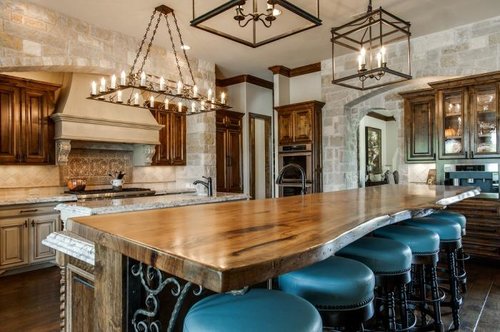I would go with the maple, then. I built our kitchen cabinets from black walnut with tiger maple...walnut boxes, doors are frame/panel with walnut frames with maple panels. The light/dark contrast works really well.
You could even pick up a sheet of 3/4" walnut plywood from hardwood distributor (be prepared for sticker shock, they run $150-$200 a sheet, but that's a lot of high-quality usable wood). This plywood is going to look world's better than anything you'd see at the big-box stores. When selecting grade, you only need one good side. Don't get pre-finished. You could then glue this to a lower quality sheet of birch plywood from a big box store to get a 1.5" thick top. You'll have ugly edges, but you can then get some maple and cut some strips to trim those ugly sides in. That would give you a nice light on dark top. Or, you can reverse it and get maple plywood and walnut trim. Just ideas. I think whatever way you go, you're going to be into this top for a couple hundred bucks. If you go MDF with formica for $100, it's going to look like a $100 countertop, IMO.
I have an island for the kitchen I'm working on right now that uses black walnut with maple ply. I'll snap a picture tonight to illustrate my point.






